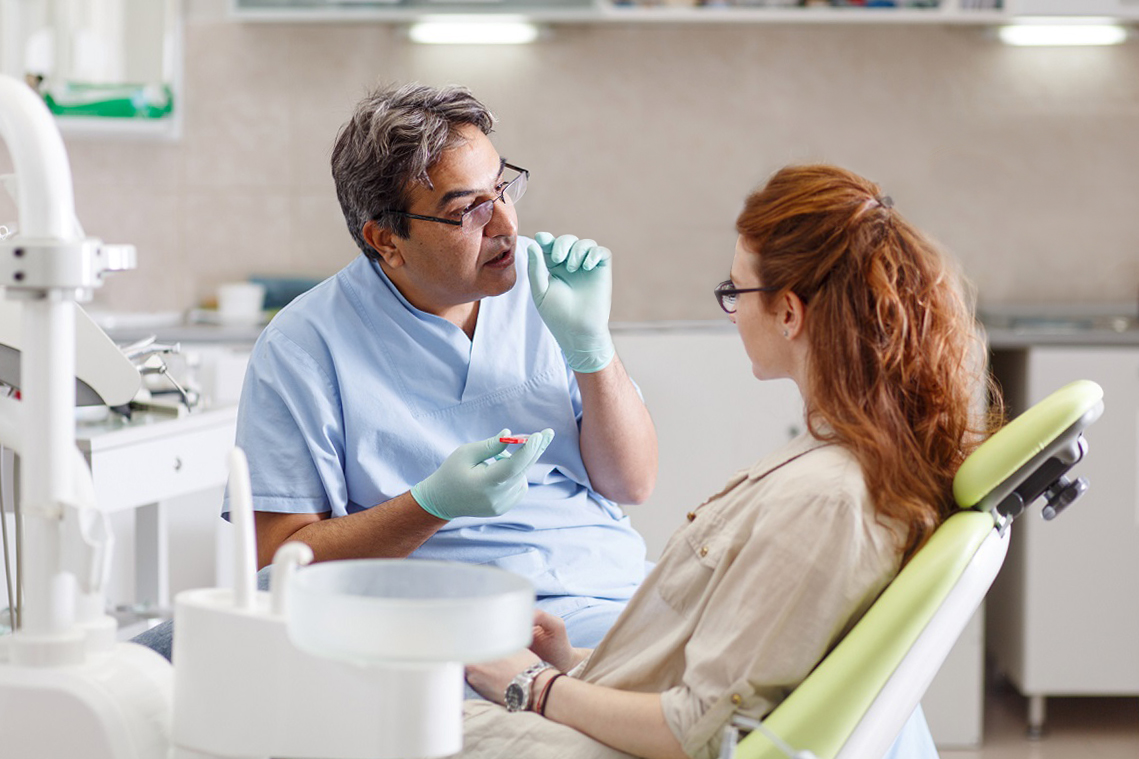Have you ever wondered what the real role of an orthodontist is and how they can completely change your smile? Orthodontists are more than just specialists who straighten teeth—they’re experts in helping you achieve a healthier mouth and a confident smile. They fix problems like crooked teeth, jaw alignment issues, and bites that don’t quite fit together. These aren’t just cosmetic fixes; they make eating, speaking, and even breathing easier.
Orthodontists have advanced training to handle issues that regular dentists can’t always treat. From fitting braces to creating custom aligners, their work goes beyond the surface, improving how your teeth and jaw work together.
In this article, we’ll uncover everything you need to know about the role of an orthodontist. You’ll learn what they do, when you should visit one, and what to expect during treatment. Ready to see why their work matters so much? Let’s begin.
What Is an Orthodontist?
The role of an orthodontist goes beyond basic dental care. Orthodontists are dental specialists trained to diagnose, prevent, and treat problems with how your teeth, jaw, and face align. They focus on issues like crooked teeth, gaps, overbites, and underbites—problems that affect both appearance and the way your mouth works.
After completing dental school, orthodontists undergo an extra three years of advanced training, called an orthodontic residency. This specialized education gives them the skills to handle complex dental and facial irregularities. They’re experts in guiding teeth and jaws into the right positions, making sure everything fits and functions the way it should.
Their work isn’t just about straightening teeth. Orthodontists help improve how you chew, talk, and even smile. By correcting bite and jaw alignment, they also make everyday activities like eating more comfortable. Whether it’s braces, clear aligners, or other treatments, orthodontists create personalized plans to give patients better oral health and a smile they feel good about.
Orthodontists combine science and precision to help people look and feel their best. Their role is essential for both functional improvements and boosting confidence with a healthier, well-aligned smile.
How Orthodontists Differ from General Dentists
The role of an orthodontist is quite different from that of a general dentist, even though both focus on keeping your teeth healthy. General dentists are the go-to professionals for regular checkups, cleanings, filling cavities, and making sure your gums stay healthy. They handle overall dental care and keep your mouth in good shape.
Orthodontists, on the other hand, specialize in straightening teeth and fixing jaw alignment problems. They’re experts in understanding how teeth move, how the jaw grows, and how everything works together. Their advanced training gives them the skills to treat issues like crooked teeth, gaps, overbites, and underbites.
The tools and techniques orthodontists use are also unique. They use braces, clear aligners, and other devices to slowly shift teeth into the right positions. Orthodontists create custom treatment plans tailored to each person’s needs, making sure both function and appearance are improved.
While a general dentist helps you maintain your overall oral health, an orthodontist focuses on aligning your teeth and jaws for better function and a confident smile. Together, they play a vital role in giving you the best care for your teeth.
When Should You See an Orthodontist?
The role of an orthodontist is crucial at any age, but starting early can make a big difference. Experts recommend that children have their first orthodontic check-up between the ages of 7 and 10. Even if their teeth seem fine, this visit can help catch potential problems before they become more serious. Early evaluation gives orthodontists a chance to guide jaw growth and address alignment issues early on.
Certain signs make a visit to the orthodontist even more important. If your child has trouble biting or chewing food, it could mean their teeth or jaw aren’t lining up properly. Breathing through the mouth or snoring can also be signs of a jaw problem. Misaligned, crooked, or crowded teeth are another clear reason to schedule an appointment. Orthodontists can step in to prevent these issues from affecting a child’s ability to eat, speak, or smile comfortably.
Adults aren’t left out, either. If you have bite problems, gaps, or teeth that feel out of place, orthodontic care can help at any age. Cosmetic concerns, like wanting a straighter smile, are also common reasons adults seek treatment. Modern options like clear aligners make it easier and more discreet than ever.
An orthodontist’s expertise is invaluable for both children and adults, ensuring better oral health and confidence at every stage of life.
What Conditions Do Orthodontists Treat?
The role of an orthodontist is to address a wide range of dental and jaw problems that can affect both how your mouth works and how your smile looks. One of the most common issues they handle is crooked or crowded teeth, which can make it hard to clean your teeth properly and lead to discomfort or self-consciousness.
Orthodontists also treat overbites, underbites, and crossbites. These issues happen when your teeth don’t fit together the way they should, which can cause uneven wear on your teeth or even jaw pain. Gaps between teeth, whether they’re small or large, are another condition orthodontists can fix. They close these spaces to improve both the appearance and function of your bite.
Jaw alignment problems are another area where orthodontists specialize. If your upper and lower jaw don’t line up, it can affect your facial proportions and even make activities like eating or speaking difficult. Orthodontic treatments focus on gradually correcting these issues to restore balance.
By using braces, aligners, and other tools, orthodontists improve more than just looks. Straight teeth and a healthy bite can make chewing easier, prevent long-term dental problems, and boost your confidence. Whether it’s for functional reasons or aesthetics, orthodontic care has benefits that last a lifetime.
Common Orthodontic Treatments
The role of an orthodontist includes offering a variety of treatments to address alignment and bite issues. Here’s a breakdown of the most common options:
-
Braces
- Metal Braces: Traditional braces made of stainless steel, effective for all types of alignment problems.
- Ceramic Braces: Tooth-colored braces that blend in with your teeth, offering a more discreet option.
- Lingual Braces: These braces are attached to the back of your teeth, making them nearly invisible.
-
Clear Aligners
- Invisalign: Custom-made, clear plastic trays that are removable and nearly invisible.
- Great for mild to moderate alignment issues and popular among teens and adults looking for a subtle solution.
-
Other Appliances
- Retainers: Used after braces or aligners to keep teeth in their new position.
- Expansion Plates: Designed to widen the jaw and create space for crowded teeth.
- Bite-Correcting Springs: Helpful for fixing overbites or underbites.
-
Treatment Duration
- Most orthodontic treatments take about 18 months to two years, depending on the complexity of the issue.
- Regular check-ups with your orthodontist ensure progress stays on track.
Each treatment is carefully chosen based on your unique needs, combining comfort, function, and long-lasting results. Whether it’s braces, aligners, or other devices, these solutions help create a smile you can feel confident about.
What Happens During an Orthodontic Appointment?
Your first visit to an orthodontist is all about getting to know your teeth and figuring out what’s needed to improve them. The process is simple and designed to help you feel comfortable.
-
Discussion of Concerns
- The orthodontist will start by asking about any problems you’ve noticed, like difficulty chewing or concerns about how your teeth look. They’ll also talk about your goals, whether it’s fixing a bite issue or straightening your smile.
-
Examination
- They’ll check your teeth, jaw, and how your bite lines up. This hands-on exam helps identify what’s working and what needs attention.
-
X-rays or Scans
- To get a complete picture, they may take X-rays or digital scans. These images provide details that aren’t visible during a regular check-up.
-
Personalized Plan
- After the exam, the orthodontist will explain their findings and create a treatment plan tailored to your needs. They’ll also talk about costs, timelines, and what to expect during the process.
An orthodontic appointment is a chance to get all your questions answered and start working toward a healthier, more confident smile.
How Much Does Orthodontic Treatment Cost?
The cost of orthodontic treatment can vary depending on the type of care and your specific needs. Traditional braces, one of the most common options, typically range from $6,000 to $9,000 for an 18-month plan. Clear aligners, like Invisalign, are often priced higher, especially for more complex cases.
While these numbers might seem high, many orthodontists offer flexible payment options, including interest-free plans, to make treatment more manageable. If you have private health insurance, it may cover a portion of the costs. It’s always a good idea to check with your provider to understand what’s included and if there’s a waiting period.
For families in need, there are sometimes government or charitable programs that help with orthodontic care for children with severe conditions. These programs can significantly reduce or even eliminate the cost of treatment.
The role of an orthodontist is not just about improving smiles—it’s about investing in your long-term oral health. With the right plan and support, achieving a healthy, aligned smile can fit into almost any budget.
How to Find the Right Orthodontist
If you’re searching for the right orthodontist in Clark NJ, start by looking at local practices with strong patient reviews and a reputation for excellent results, like Clark Pediatric Dentistry & Orthodontics.
You can also check online directories or organizations like the American Association of Orthodontists. These resources list qualified specialists in your area and often include helpful reviews from other patients. Make sure to verify the orthodontist’s credentials through regulatory bodies to ensure they’ve completed the necessary training.
Don’t forget to ask family and friends for recommendations. Hearing about their experiences can help you find someone who communicates well and makes patients feel comfortable. Taking the time to do a little research will help you choose an orthodontist who’s skilled, friendly, and easy to work with.
Final Thoughts on Choosing Orthodontic Care
Orthodontists play an important role in improving both oral health and confidence. Whether you’re dealing with alignment issues or looking for a straighter smile, their specialized care can make a big difference in your life.
Professional treatment isn’t just about appearances – it’s about fixing problems that impact your daily life, like eating and speaking. The right orthodontist will provide personalized advice and a treatment plan that works for you.
Investing in orthodontic care means investing in your future. A healthy, confident smile is always worth it.
Ready for Expert Orthodontic Care?
At Clark Pediatric Dentistry & Orthodontics, we’re dedicated to creating healthy, confident smiles for patients of all ages. Whether you’re considering braces, clear aligners, or other orthodontic treatments, our team offers personalized care in a comfortable and friendly environment.
Visit Clark Pediatric Dentistry & Orthodontics today to learn how we can help you or your child achieve the smile you’ve always wanted!









